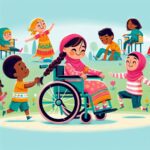Osteogenesis Imperfecta (OI) is a genetic condition that can leave new parents feeling overwhelmed and uncertain. This comprehensive guide aims to demystify OI, offering insights into its causes, symptoms, and treatments, alongside practical advice for supporting affected babies and their families. Whether you’re seeking to understand a recent diagnosis or simply wish to be informed, this article serves as a valuable resource for navigating the complexities of OI.
What is Osteogenesis Imperfecta?
Osteogenesis Imperfecta, commonly referred to as brittle bone disease, is a genetic disorder characterized by bones that break easily, often with little or no apparent cause. This condition can range from mild to severe and affects people differently. While OI is present at birth, its severity and the number of fractures can vary widely among individuals.
The disorder is caused by mutations in the genes responsible for producing collagen, a protein that’s crucial for bone strength and structure. There are several types of OI, classified based on the severity and specific genetic mutations involved. Understanding these types is essential for managing the condition effectively and supporting your child’s health and development.
How to Recognize Symptoms of Osteogenesis Imperfecta
Recognizing the signs of Osteogenesis Imperfecta early can be critical for managing the condition and minimizing the risk of fractures. Common symptoms include bones that fracture easily, bone deformities, short stature, and, in some cases, hearing loss that can develop in childhood or adolescence. Additionally, many children with OI have blue sclerae, a condition where the whites of the eyes have a blue tint due to the thinness and transparency of the sclera over the underlying veins.
It’s important for parents to be vigilant and seek medical advice if they notice any signs that could indicate OI. Early diagnosis and treatment can significantly improve the quality of life for children with this condition. For more detailed information on symptoms and diagnosis, consider reading about Osteogenesis Imperfecta on trusted medical websites.
Managing Osteogenesis Imperfecta in Babies
Managing Osteogenesis Imperfecta involves a multidisciplinary approach that includes medical treatment, physical therapy, and sometimes surgery. The goal is to prevent fractures, promote bone strength, and address any other symptoms or complications that arise. Bisphosphonates, medications that strengthen bones, are commonly used in children with OI to increase bone density and reduce the risk of fractures.
Physical therapy and safe exercise are also vital components of managing OI. They help improve muscle strength, mobility, and balance, which can reduce the risk of falls and fractures. However, it’s crucial to work with healthcare professionals experienced in OI to create a tailored exercise plan that’s safe for your child. For more resources on managing OI, the Osteogenesis Imperfecta Foundation provides comprehensive information and support for families.
Supporting Your Child’s Emotional Well-being
Children with Osteogenesis Imperfecta, like all children, need support for their emotional well-being. It’s essential to foster an environment where they feel valued and included, despite any physical limitations. Encouraging open communication about their feelings and experiences can help children cope with the challenges of OI.
Connecting with other families who are navigating similar experiences can be incredibly beneficial. Support groups and online communities offer a platform to share stories, advice, and encouragement. For families looking to connect with others, resources like Bonding and Developmental Milestones can offer guidance on fostering emotional connections and celebrating achievements.
Conclusion
Osteogenesis Imperfecta may present challenges, but with the right knowledge, support, and medical care, children with OI can lead fulfilling lives. Understanding the condition, recognizing symptoms early, and accessing appropriate treatments are crucial steps for parents. Remember, you’re not alone in this journey. There are numerous resources and communities ready to support you and your child every step of the way.
For further information on related topics, consider exploring articles on Genetic Disorders, Cognitive Development, and Breastfeeding to support your baby’s overall health and development.













